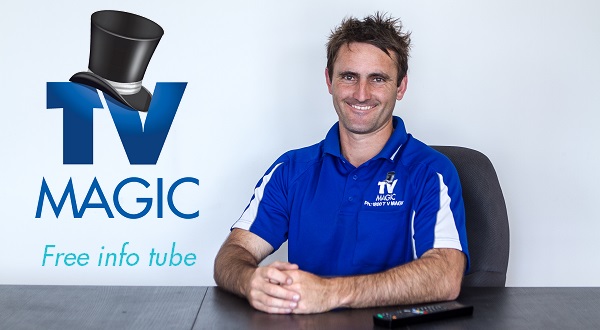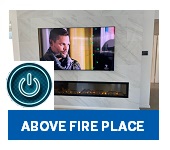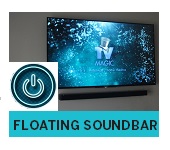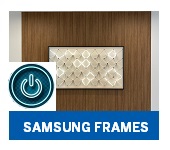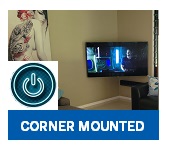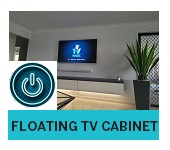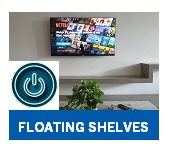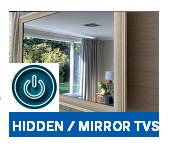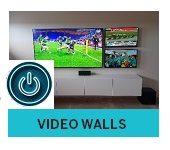TV Brackets
supply. delivery. installation.

Did you know? That TV brackets come in all shapes, sizes but not colours. The two most popular colours are black or silver & nowadays silver is phasing out. One colour is all you get; afterall, after you use the TV Bracket, the TV will hide the bracket and you'll never see it again.
How many different types of TV brackets are there?
The models and brands of different types go into the thousands. The basic types could be categorised as below:
Low Profile Brackets (no tilt, close to the wall)
- Small (up to approx 32 inch)
- Large (wall mounts TV's from 32 inch to 80inch)
Tilting TV Brackets (further from the wall but enable a TV to tilt up or down)
- Small
- Large
Swing Arm Brackets
- Small
- Medium
- Large
Custom TV Brackets
- Trolley based - (move around) - commercial purposes
- Ceiling Brackets
- Floor standing brackets (mounted from a concrete floor)
- Window brackets
These are the most popular TV brackets used in domestic and commercial applications. All brackets have their purpose and all TV brackets have pros and cons. Not all brackets are built equal or feature simplicity and useability.
Good TV brackets vs. not so good
So what makes a good TV Bracket exactly? Firstly one that supports the TV that it is intended to hang on the wall; (most will do this anyway). One that is compatible that's for sure. There are many, many models of TV's and monitors out there now that have been purposefully desinged (we think) so that you have to buy the corresponding TV Bracket just to put it on the wall. Unless you have some sort of special bracket or professional tricks of the trade this is usually true.
The real difference between good and bad TV brackets are as follows
- If you are not using a tilt or swing feature then as close as the wall as possible is usually best (this is a TV bracket that has a profile of 2.2cm or less) This is very close to the wall and easily increases the difficulty of the TV wall mounting; however the end result is always so much better. TV Magic only use these super low profile brackets as we carry all the necessary right angle connections and have all the tricks of the trade to allow us to put any TV super close to the wall.
- Useability. Not all brackets feature the same dynamics to easily attach to any TV. Some brackets come with additional spaces and different types of screws but not all. If you are unlucky you may have a TV bracket that is not the most compatible with your TV and this increases the difficulty or time to do a good TV wall mounting job.
That's about it! Really any TV bracket does what it is suppose to do. Cheap and nasty brackets can be dangerous; but you're never going to see a TV bracket again once it has been installed properly.
As for the difference between good and bad tilt and swing arm brackets there can be more to look out for:
- Firstly any swing arm bracket has rubbers in it and if you are expecting your TV to be perfectly 'level' as you move it from side to side this is impossible due to the weight of your TV at an extended length (swing brackets).
- As for tilt brackets - there are only different styles that make it easier or harder to lock the tilt, move the tilt of your TV. The quality of the bracket will determine how smoothly the movement easy. Cheap and nast TV tilt brackets are rough and feel like if you moved it over a hundred times like the TV may fall off the wall.
- The same goes for swing arm TV brackets. Quality and the price paid make a difference in the quality and smoothness of the TV movement. If you are going to move the TV regularly than paying a few extra hundred dollars will be well worth it. The more expensive brackets use beter quality steel and mechanisms for a smooth, quiet and safe feeling movement of a heavy TV moving at extension.
Wall mounting your TV using a swing arm bracket
Two major tips here:
- There is no way of making your TV perfectly level at all angles, no matter what TV bracket you have or what TV you have. To make your TV level if you are going to leave a TV swung out to one side (and it never gets moved) You may have to experiment with mounting the back plate in a position that is slightly off level so that the weight counter balances.
- Allow extra time! Mounting a TV on an arm is nearly twice the job as mounting on a flat bracket especially if you are concealing cables! Having cables concealed behind a swing arm bracket and still flexible enough for movement is an art!
For supply of TV brackets or TV wall mounting installations






